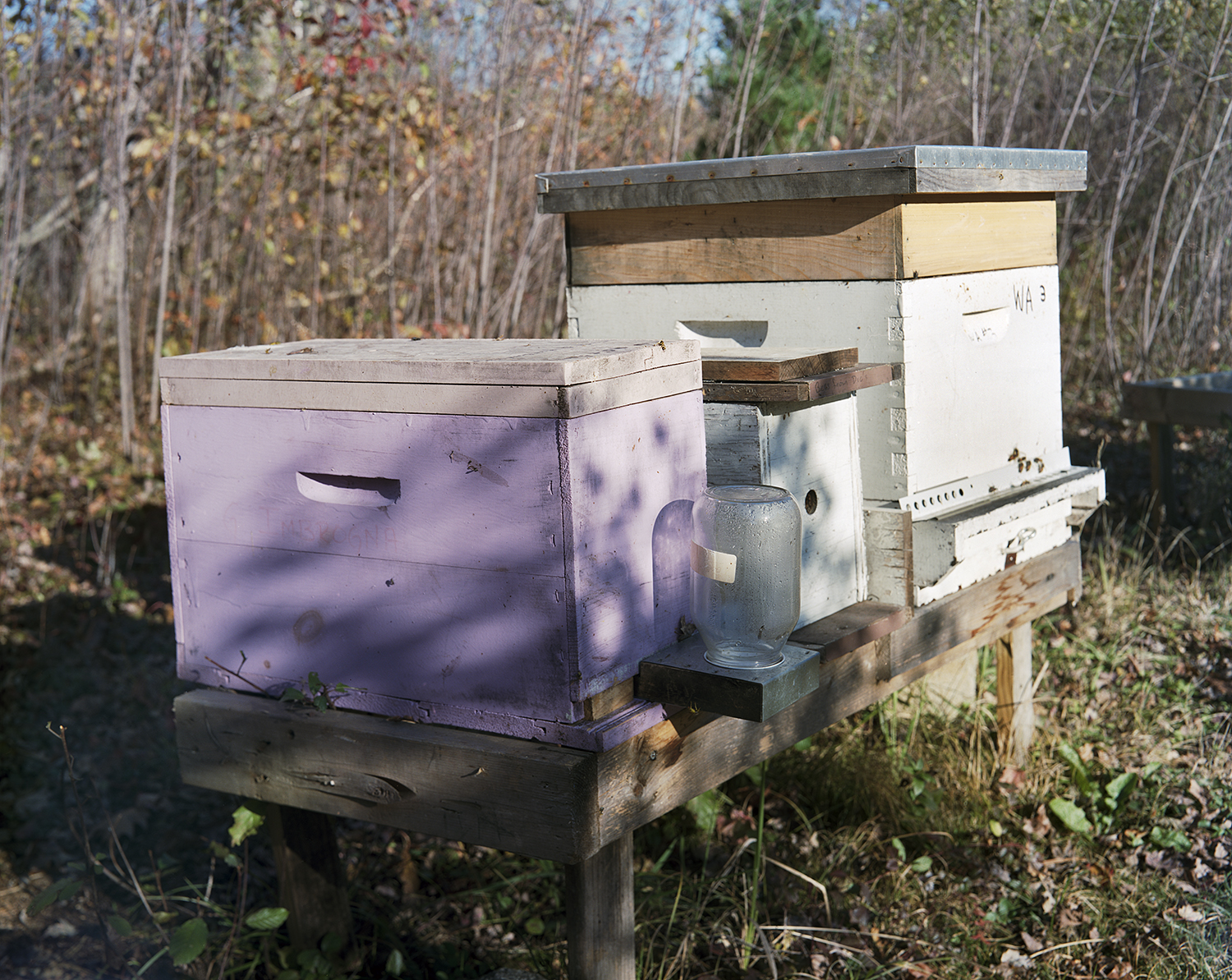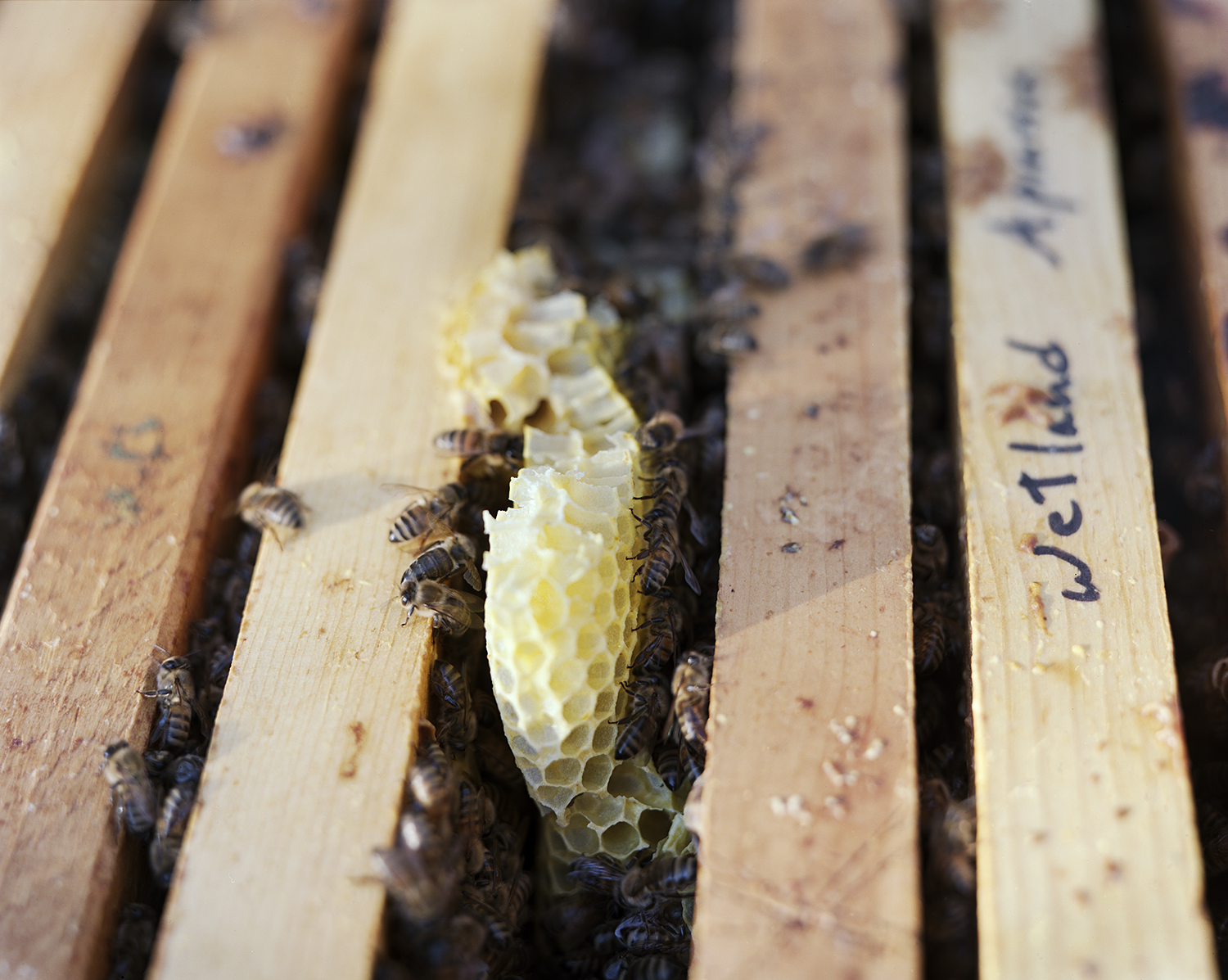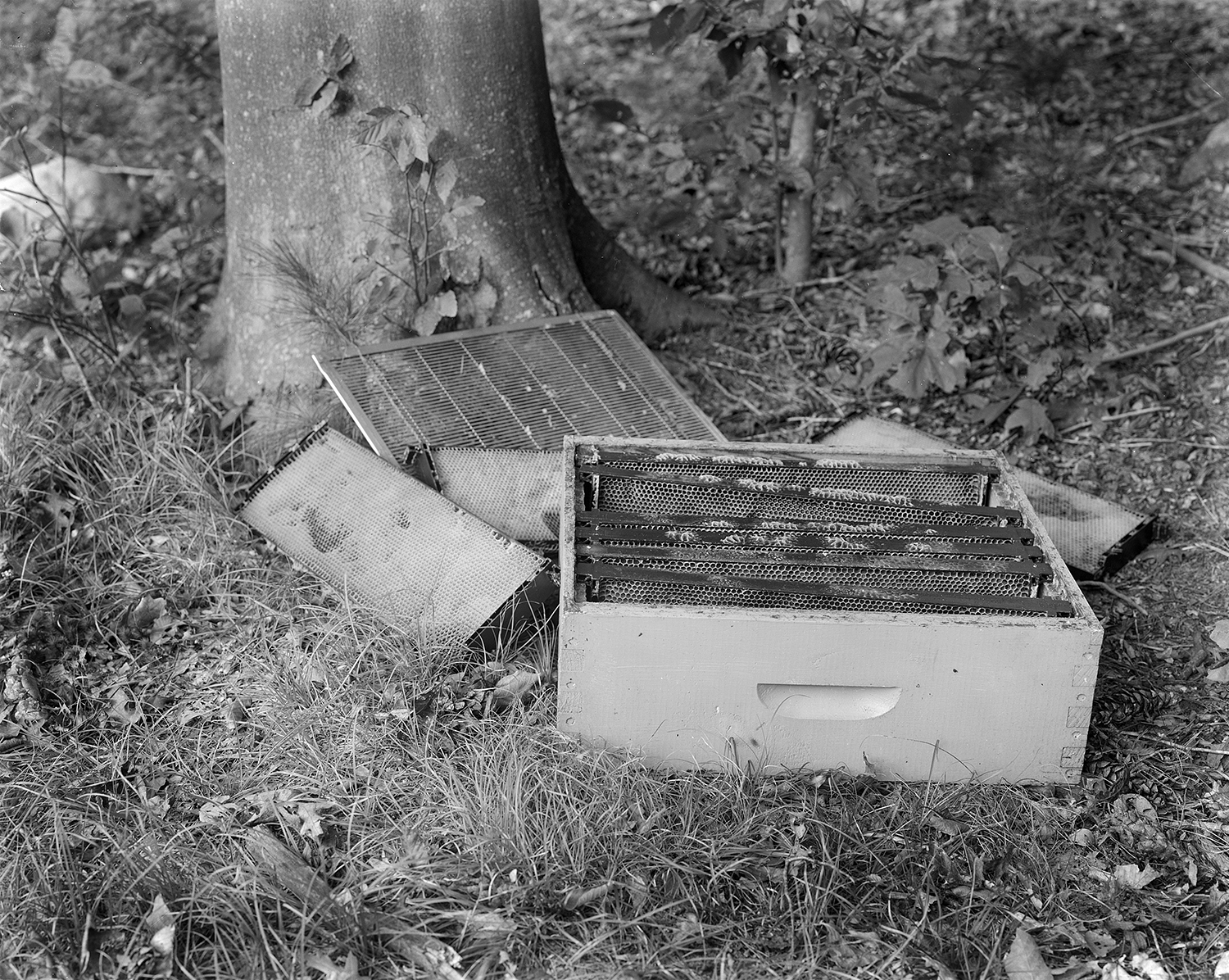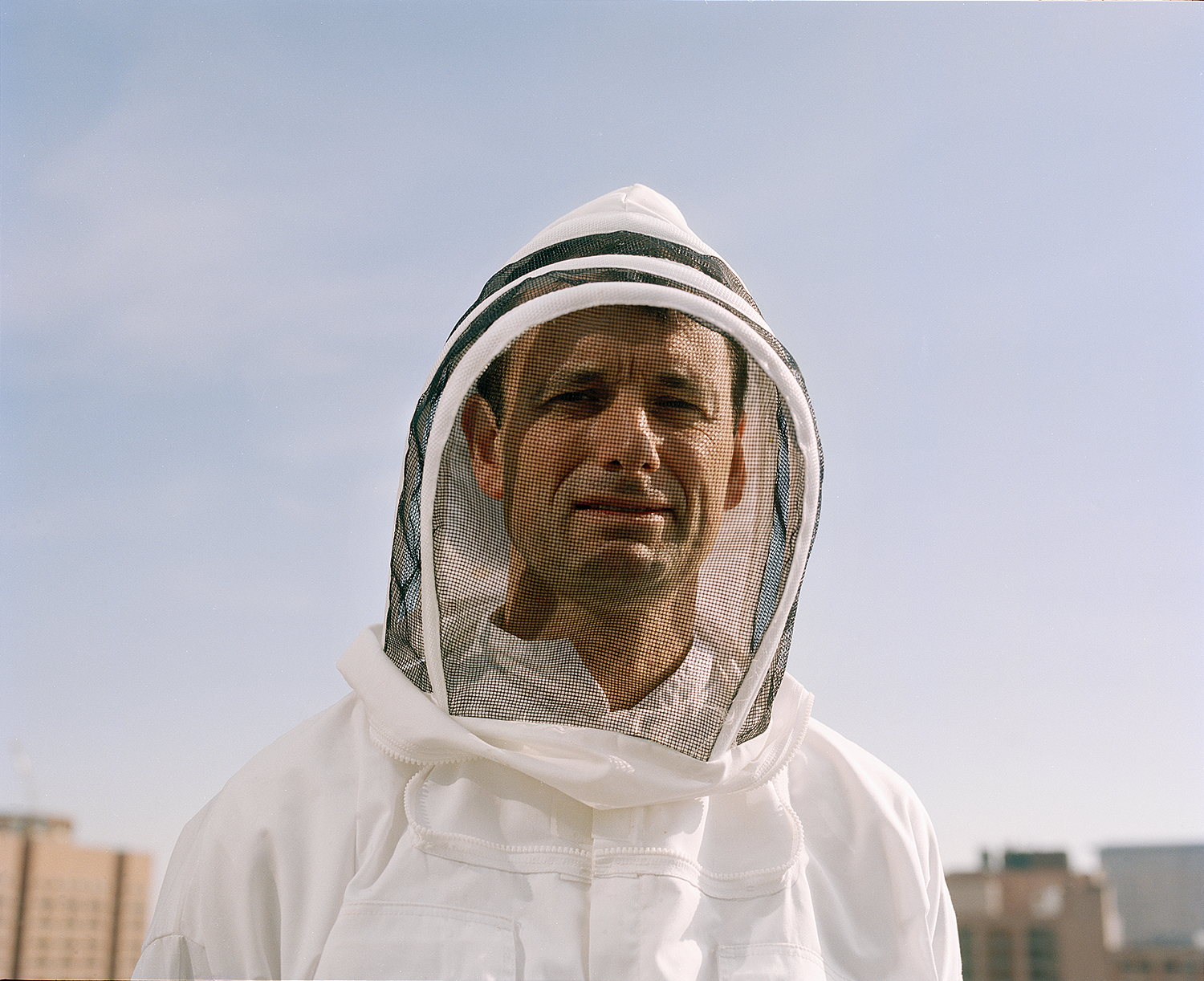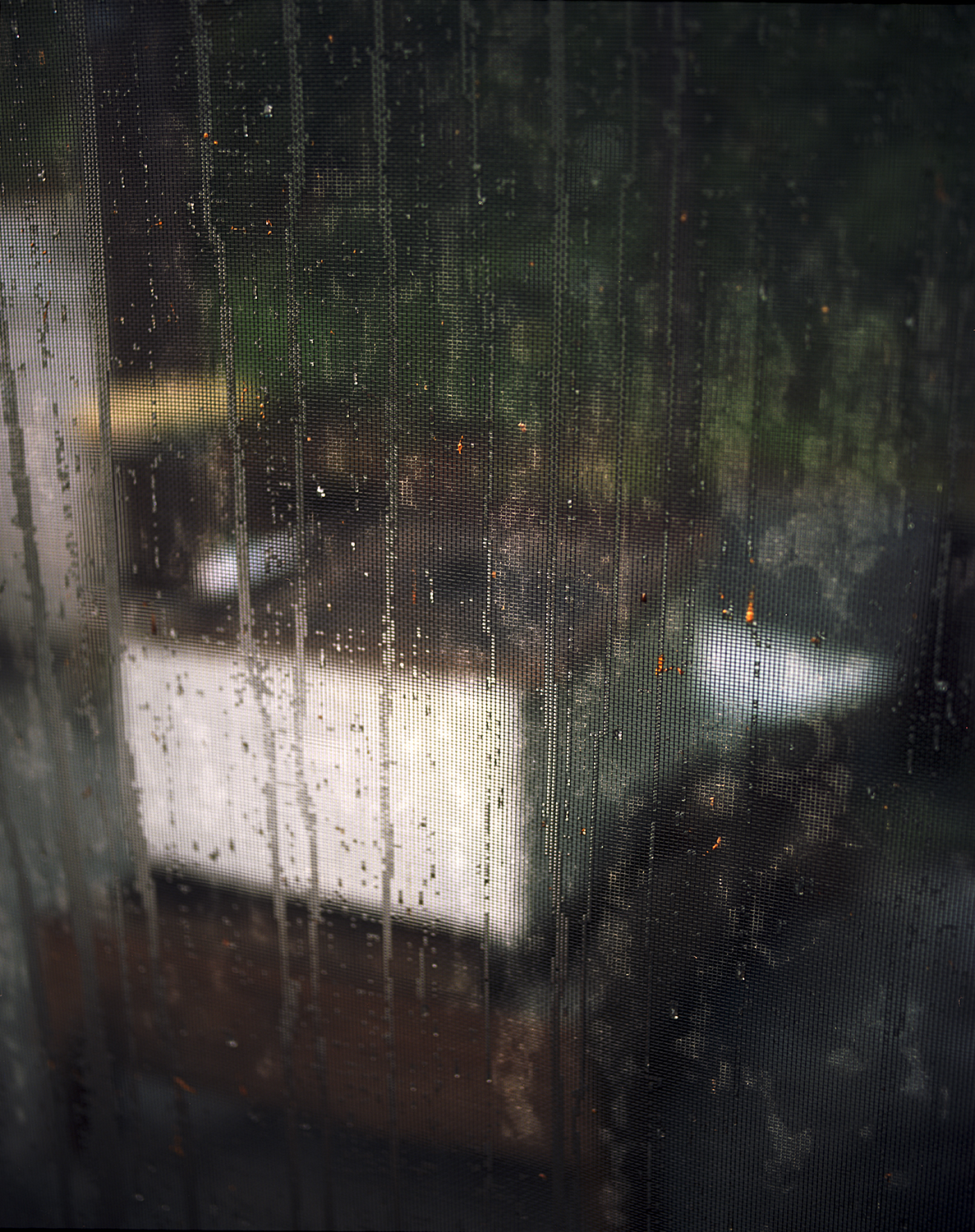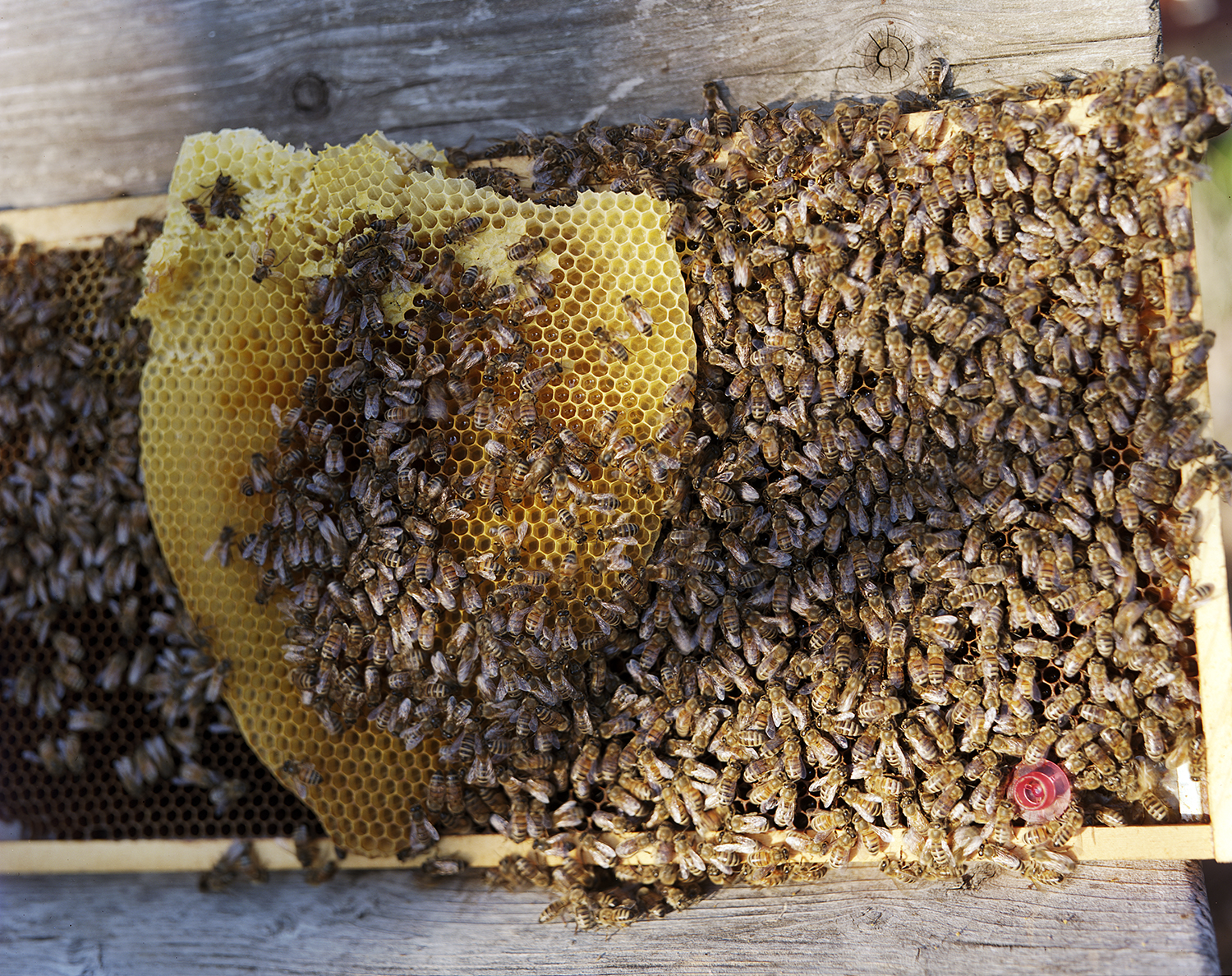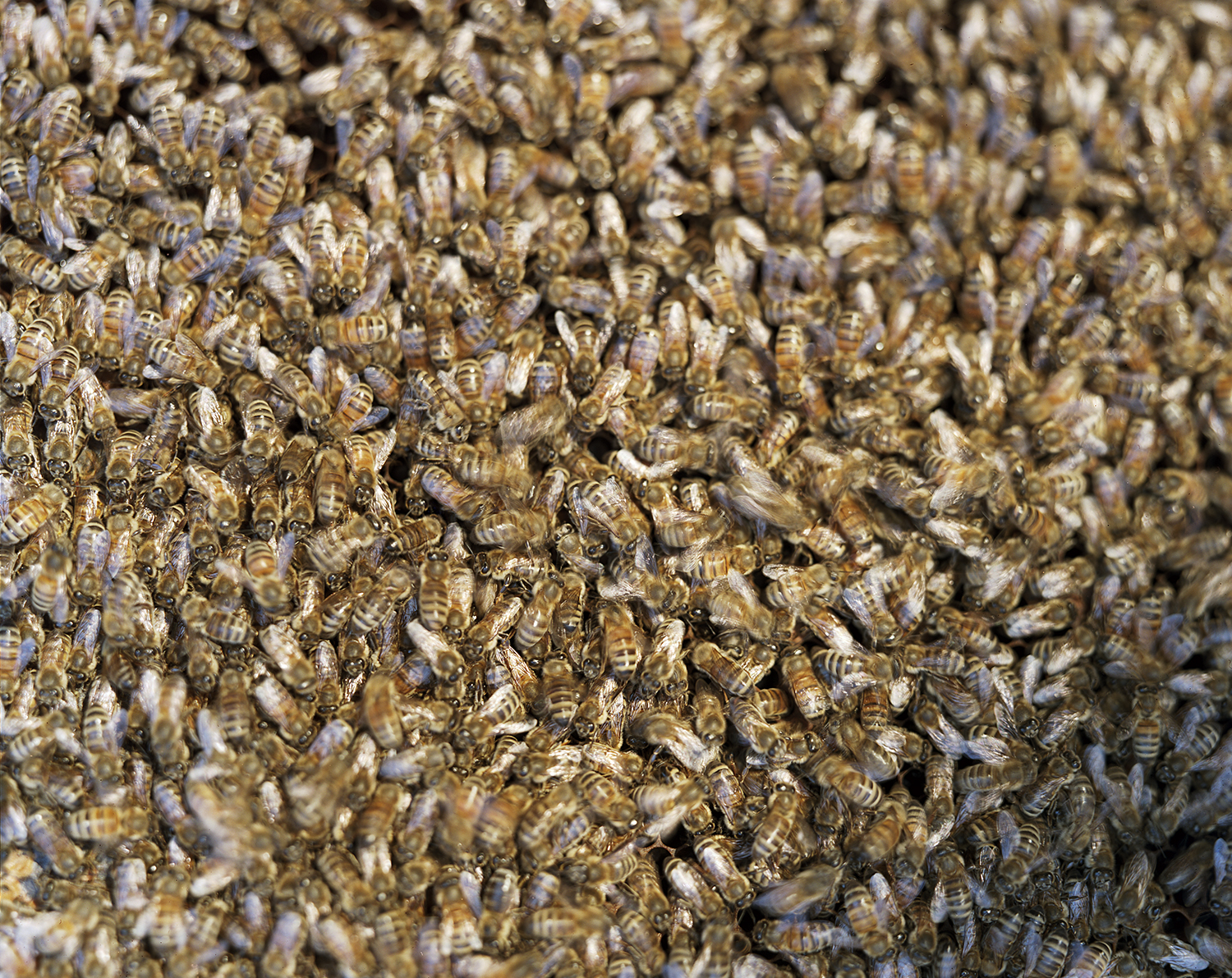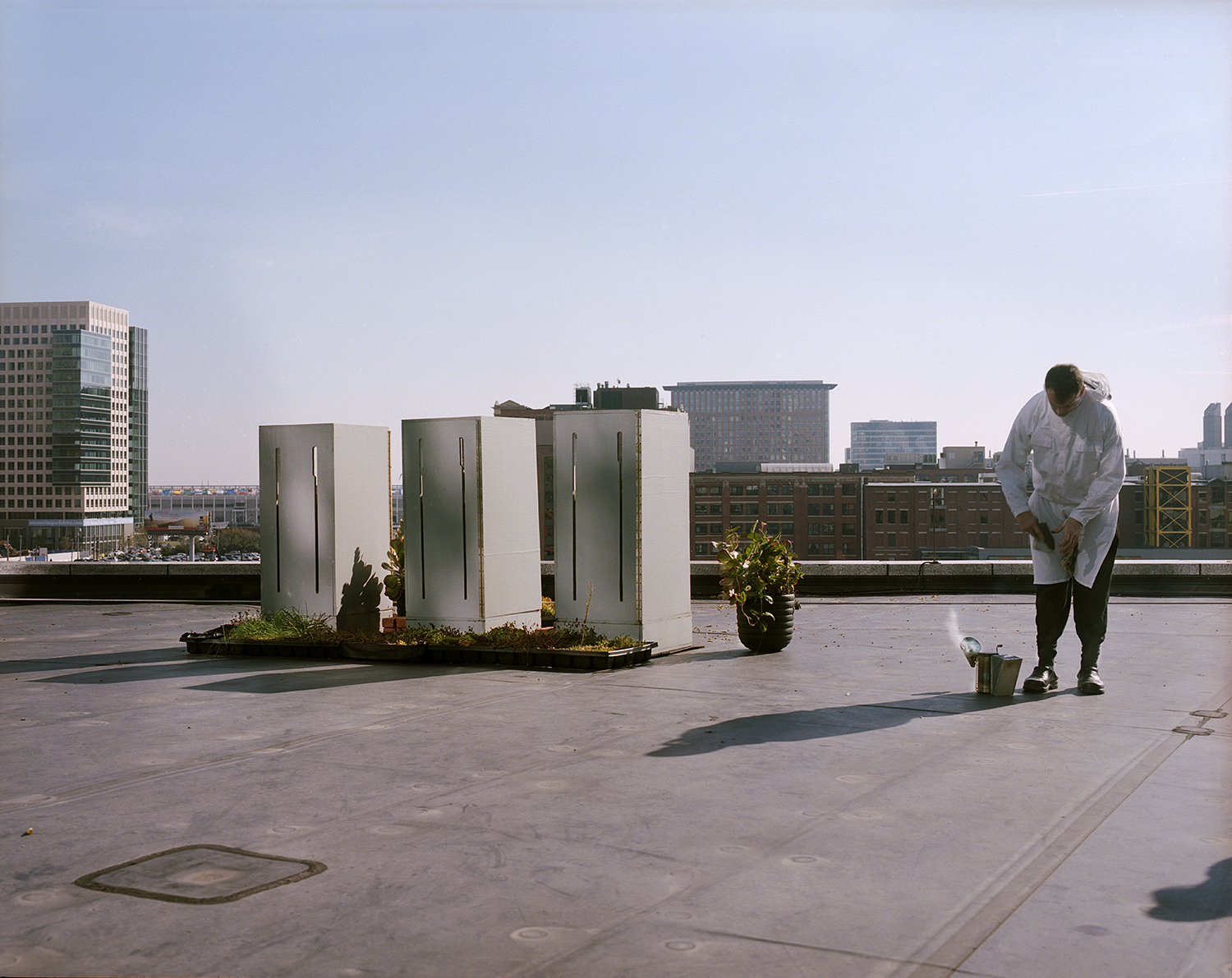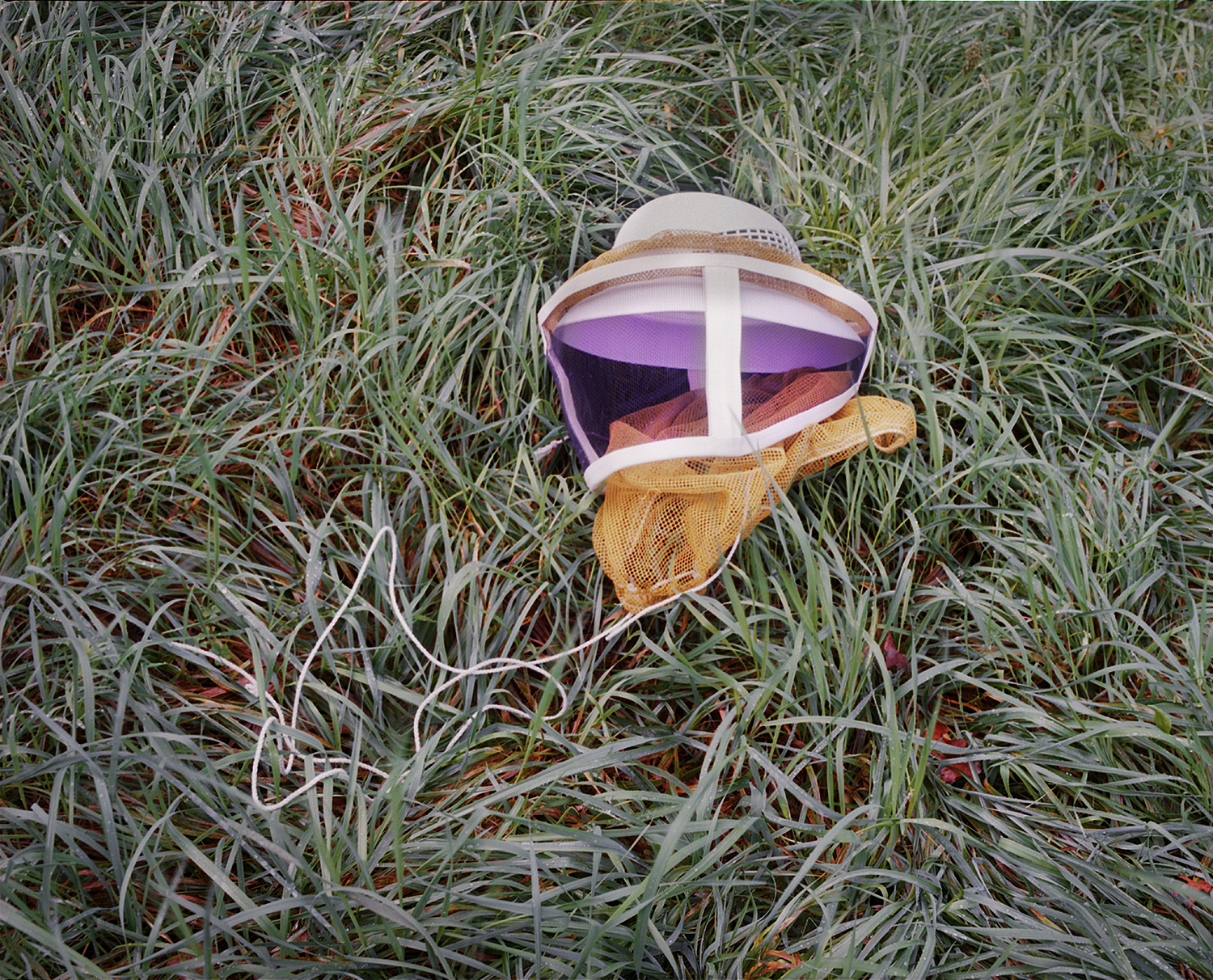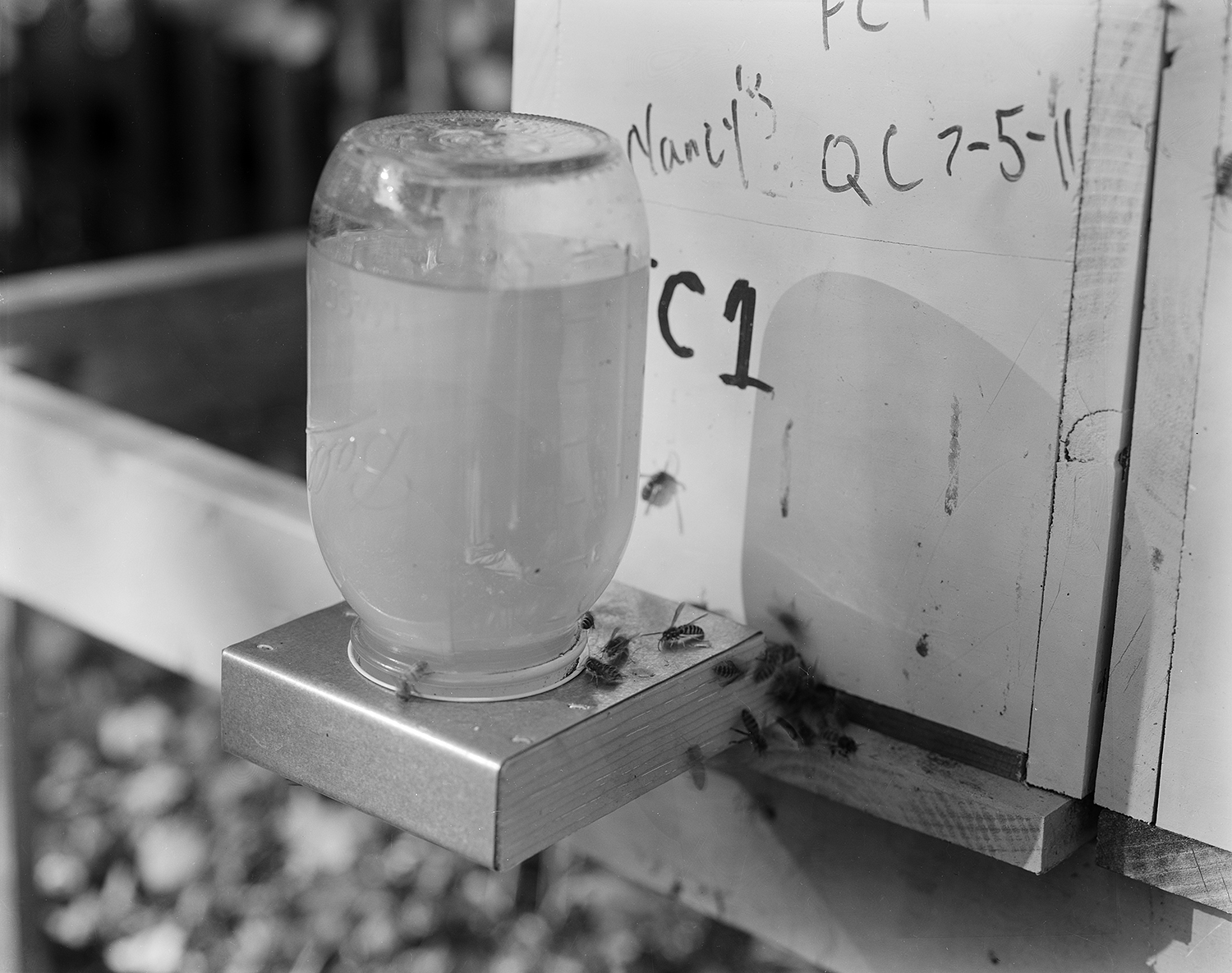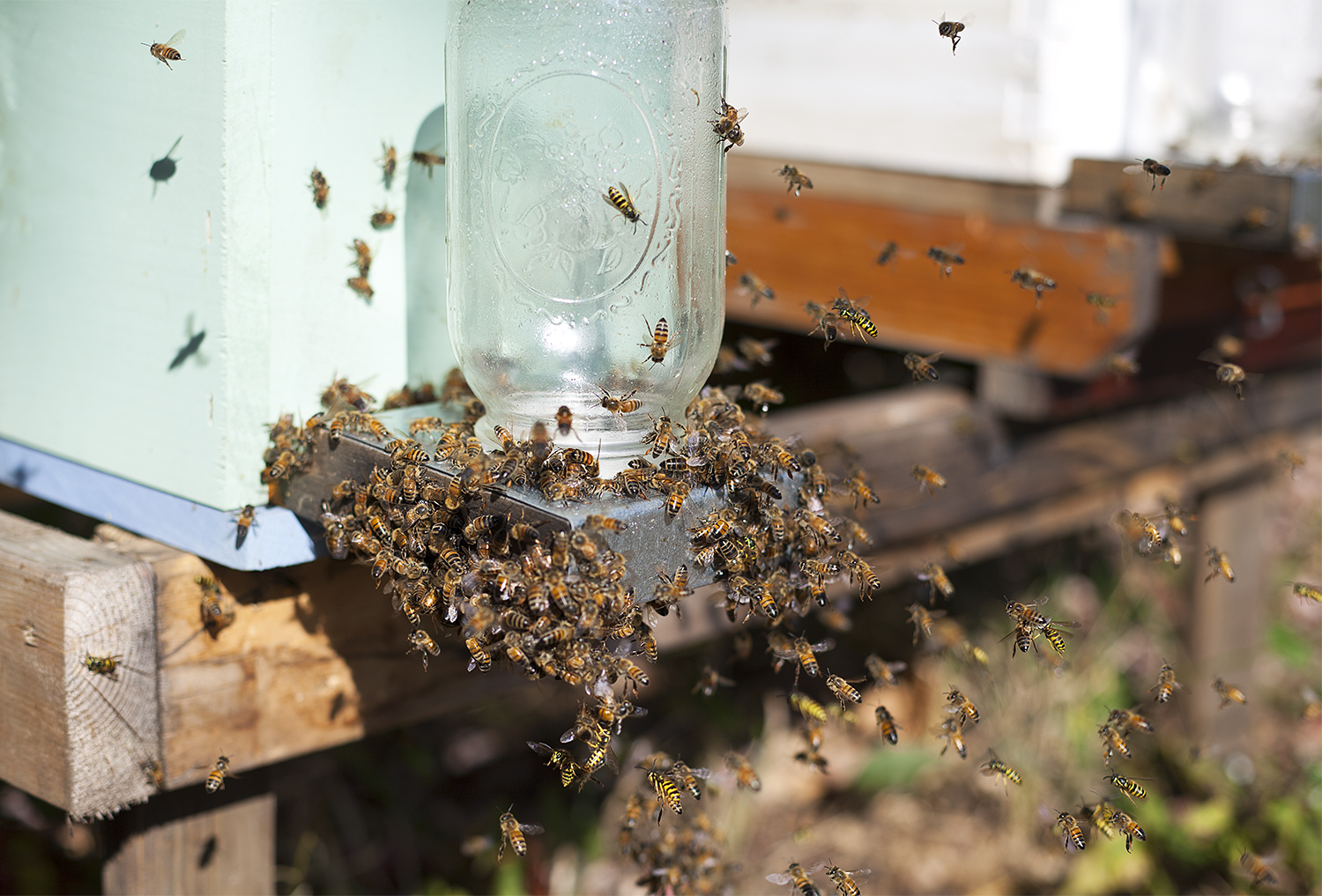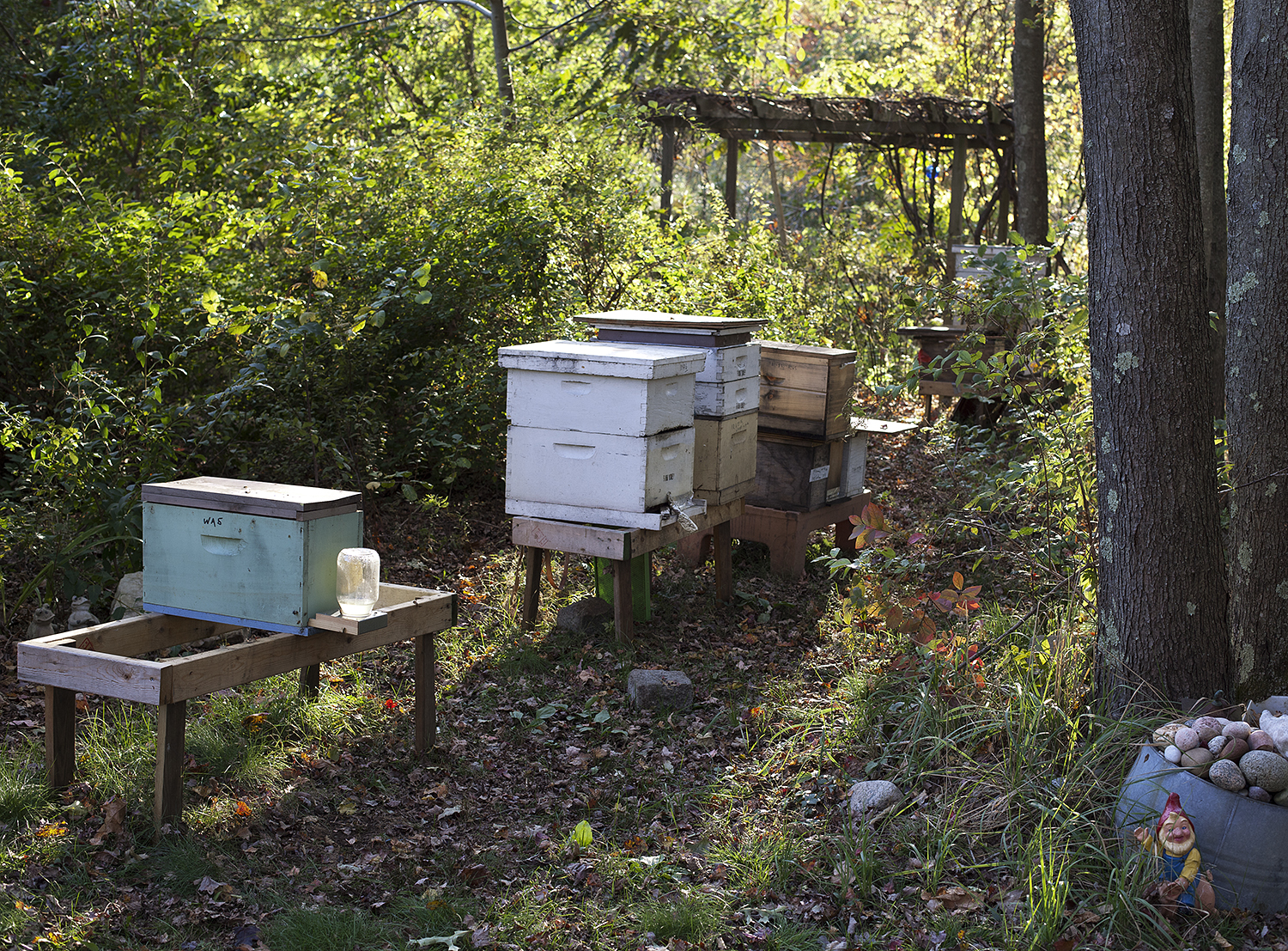The saga of the honey bee and humanity has been intertwined since the start of the earliest civilizations. This body of work is intended to explore the human control over a functioning hierarchy, this being the hive. It is a study of the relationship of work and labor of honey bees, their self governance, and balance of interaction with humans. Non Nobis (Latin, we work, but not for ourselves) is a term that was coined to describe the constant labor of a worker bee, and how her work is for a greater good: the survival of the colony.
In this context, Non Nobis is meant to describe the relationship between the bee and the keeper, who harvests the honey and uses bees as a tool for pollination. The cultural dependence of beekeeping has long been a subject that was transferred visually through art. Primitive drawings of man collecting honey were scrawled on the walls of a Spanish cave, and Renaissance painters would capture the sexual quality of the hive by depicting Cupid,dripping with honey surrounded by bees.
The bees’ care not of my presence, they worry not of my photographs. They resume dutifully to a never ending workload, never sleeping, just as they have done before the origin of mankind. In a way I am just another explorer in a vast pool of those who have pondered the magnificent structure of the beehive. Unlike these forefathers, I am able to exploit the gift of the photographic process to visualize these inner workings and explore how power is divided throughout a colony.
